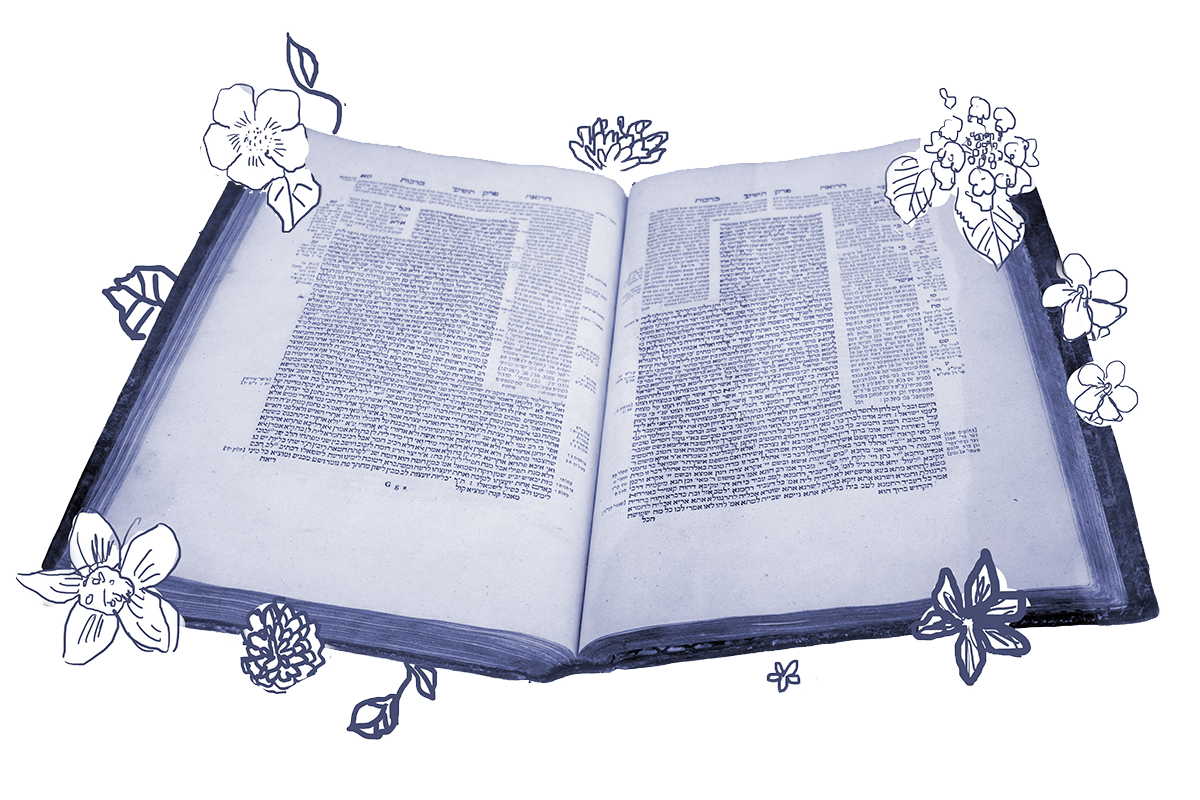The mishnah on today’s page teaches about the different materials with which one is allowed to insulate food on Shabbat in order to keep it warm. We learn that we are not only allowed to keep our food warm by insulating it with produce and wood shavings, but we are allowed to insulate our food using the wings of doves. (What an image!)
The mention of dove’s wings leads the Gemara to share the story of Elisha, “Man of Wings,” who continued to wear tefillin despite a Roman decree that anyone who donned them would be put to death.
And why did they call Elisha “Man of Wings”? Because on one occasion the evil kingdom of Rome issued a decree against Israel that they would pierce the brain of anyone who donned tefillin. Nevertheless, Elisha would don them and defiantly go out to the marketplace. One day, an official saw him; Elisha ran away from him, and the official ran after him. When the official reached him, Elisha removed the tefillin from his head and held them in his hand. The officer asked him: What is that in your hand? Elisha said to him: It is merely a dove’s wings. A miracle was performed: He opened his hand, and, indeed, it was found to be a dove’s wings. Therefore, in commemoration of this miracle, they would call him Elisha, Man of Wings.
In this story, Elisha defies the Roman government’s decree and in doing so, nearly gets himself killed with his very public performance of wearing tefillin. Miraculously, at the moment of his near capture, he removes the tefillin, hides them in his hands, and upon his words, they transform into dove’s wings, thus saving his life.
But why dove’s wings? The Gemara explains that just as the dove is protected only by its wings, so too the Jewish people — who are compared with the dove in scripture (Psalms 68:14) — are protected only by mitzvot. Elisha’s remark to the Roman official, the Gemara explains, was not a random falsehood, but in fact an absolutely truthful if coded answer to the question. Tefillin, which symbolize the commandments that Jews literally hold before their eyes, are as protective (and, we might imagine, transportive) to those who wear them as wings are to a dove.

Help us keep Jewish knowledge accessible to millions of people around the world.
Your donation to My Jewish Learning fuels endless journeys of Jewish discovery. With your help, My Jewish Learning can continue to provide nonstop opportunities for learning, connection and growth.
The mention of this miraculous dove brings to mind the narrative of Noah and the flood. In the aftermath of the forty days of downpour, Noah first sends out the raven to see if the water has receded enough to reveal dry land but the raven doesn’t return. Noah then sends the dove to brave this post-destruction world. She returns, unable to find a place to rest. Seven days later, again, the dove is sent out to the flooded abyss, and this time she brings back proof of life after the flood, an olive leaf in her beak.
The dove in both of these stories is a symbol that at once reflects power and vulnerability. It is the dove that saves Elisha from certain death and it is the dove that braves a post-flood world and brings back news of renewed life. And yet the dove also conjures up images of vulnerability with its small body and only its fragile wings to protect it.
May this dove be a symbol for us. May we find power in our vulnerability, may we find life after the flood.
Read all of Shabbat 49 on Sefaria.
This piece originally appeared in a My Jewish Learning Daf Yomi email newsletter sent on April 24, 2020. If you are interested in receiving the newsletter, sign up here.



